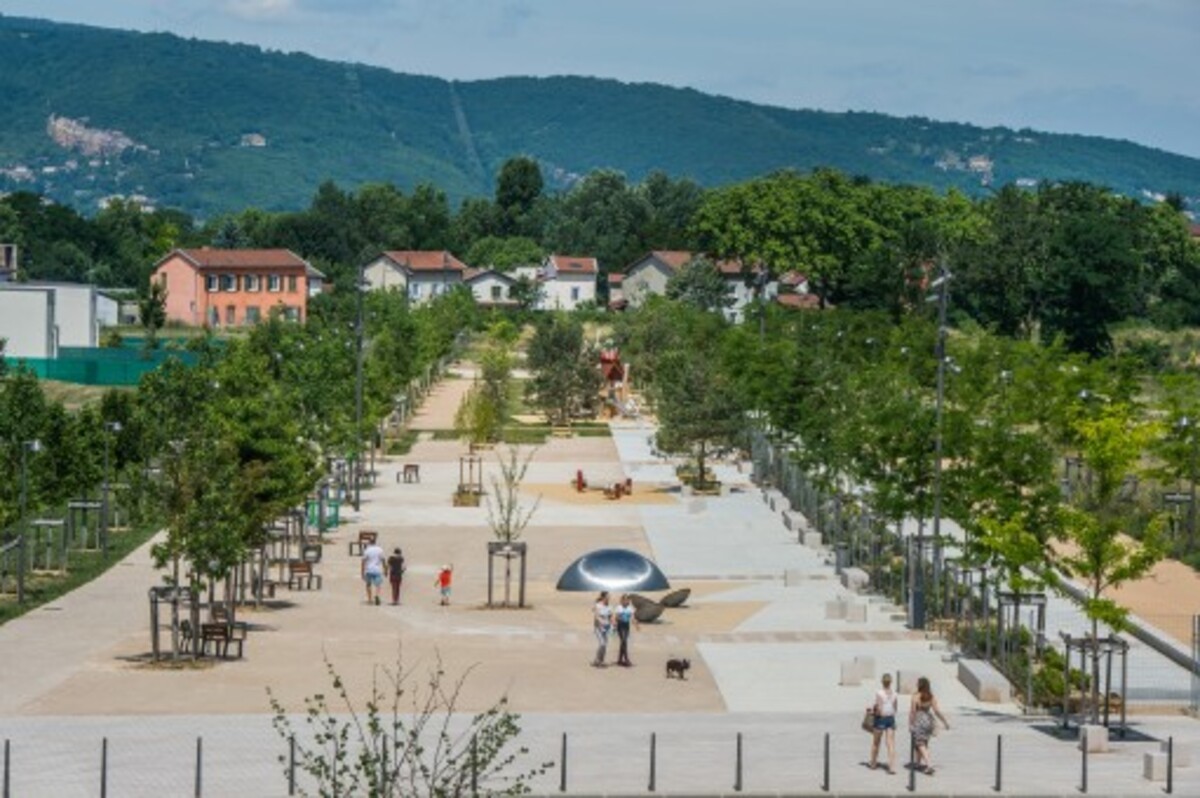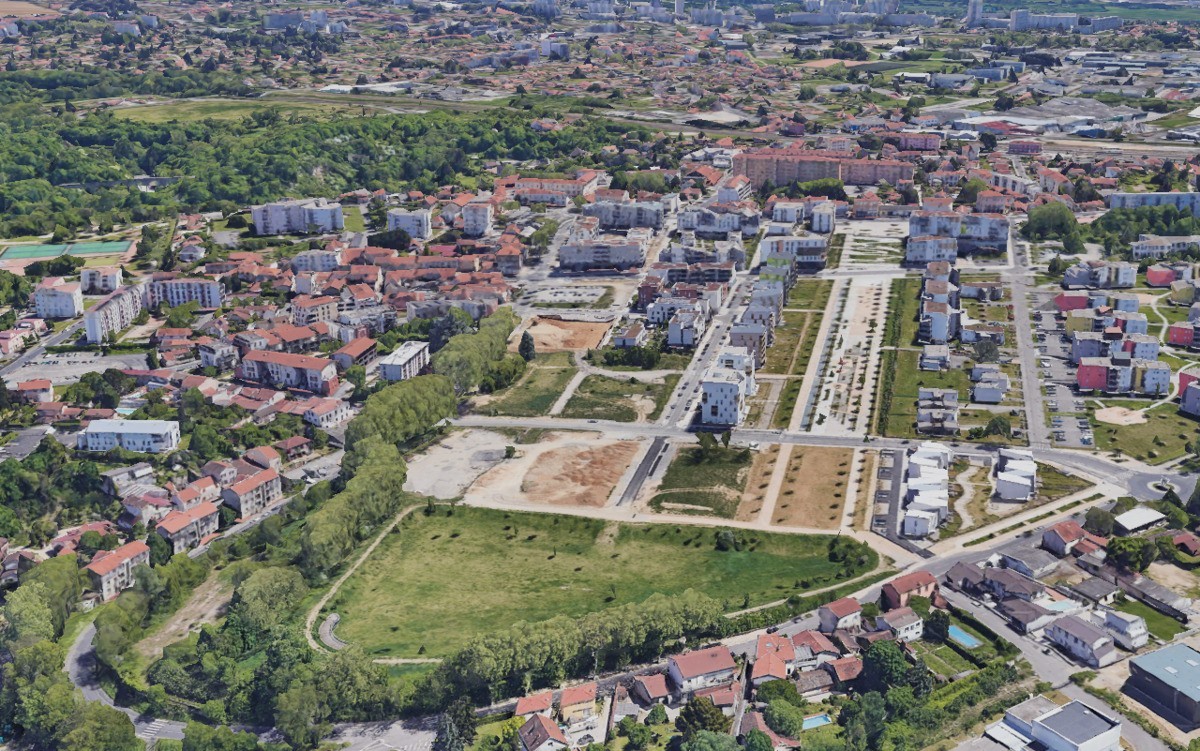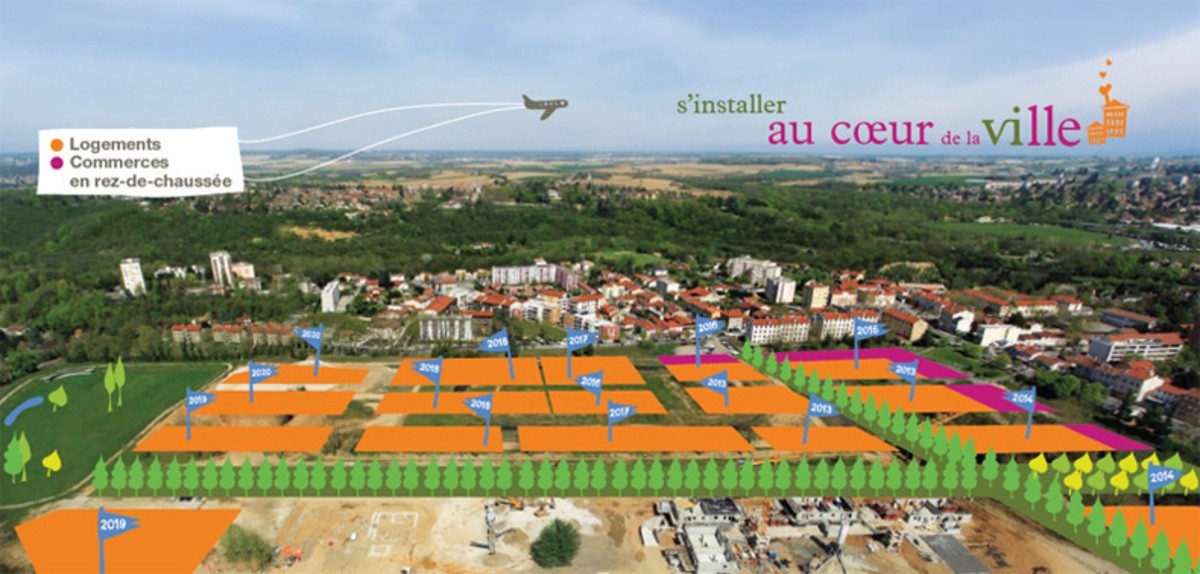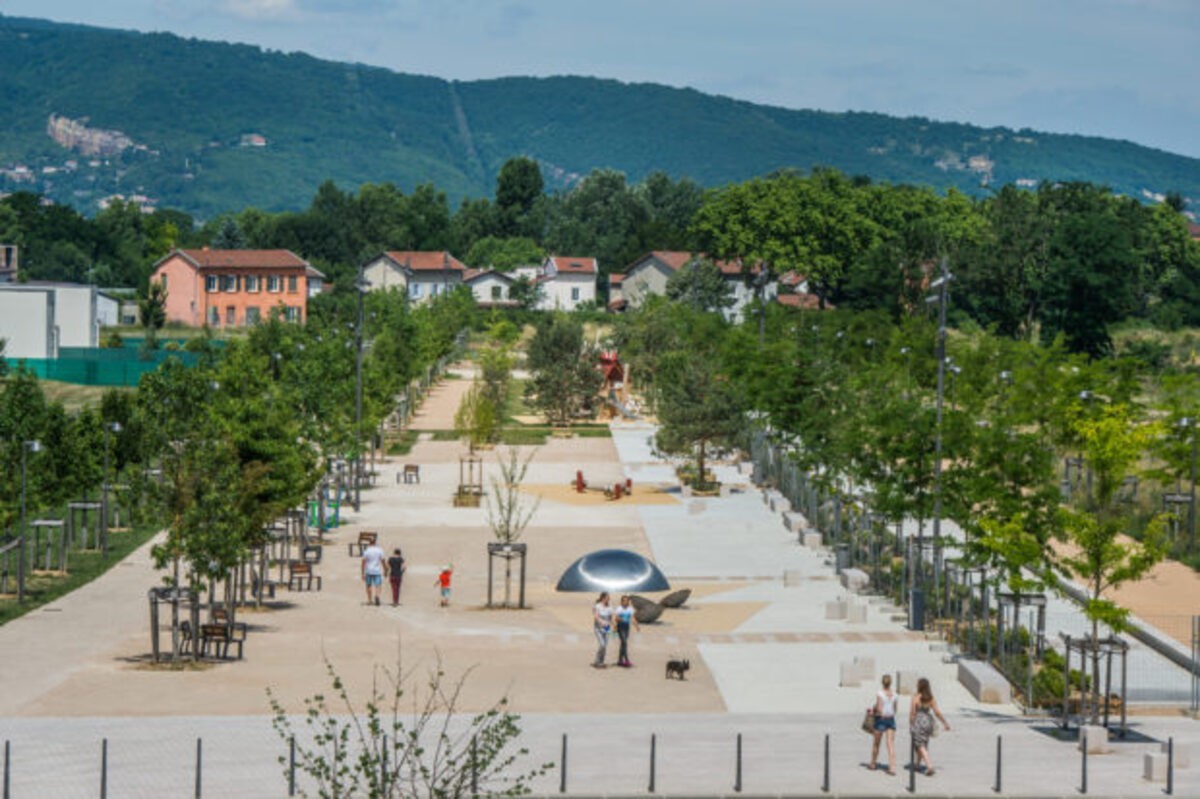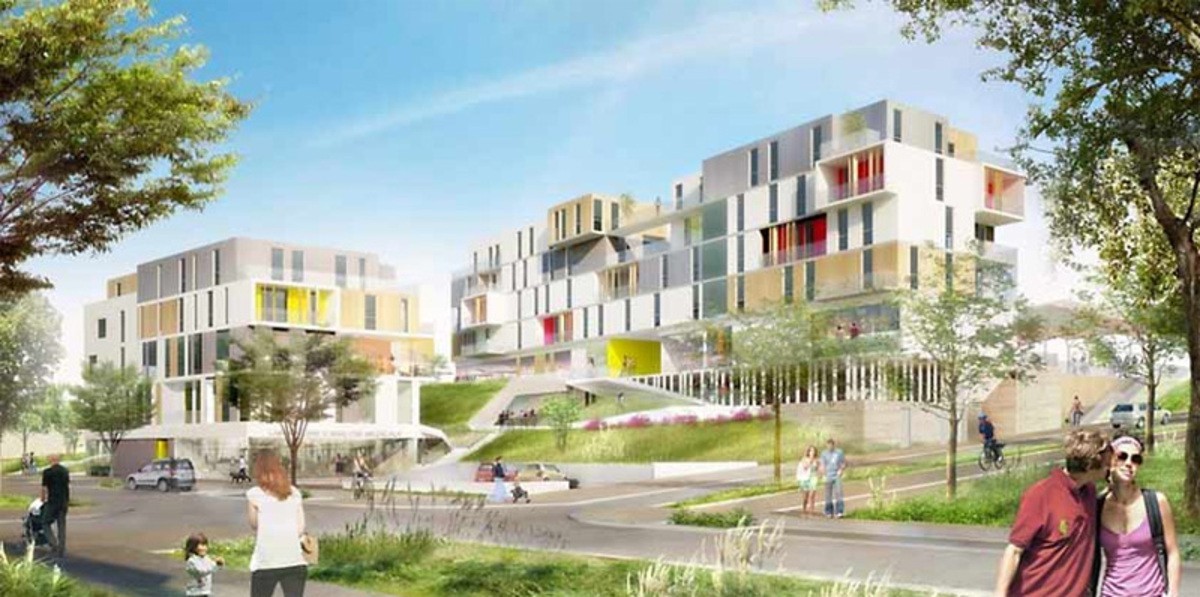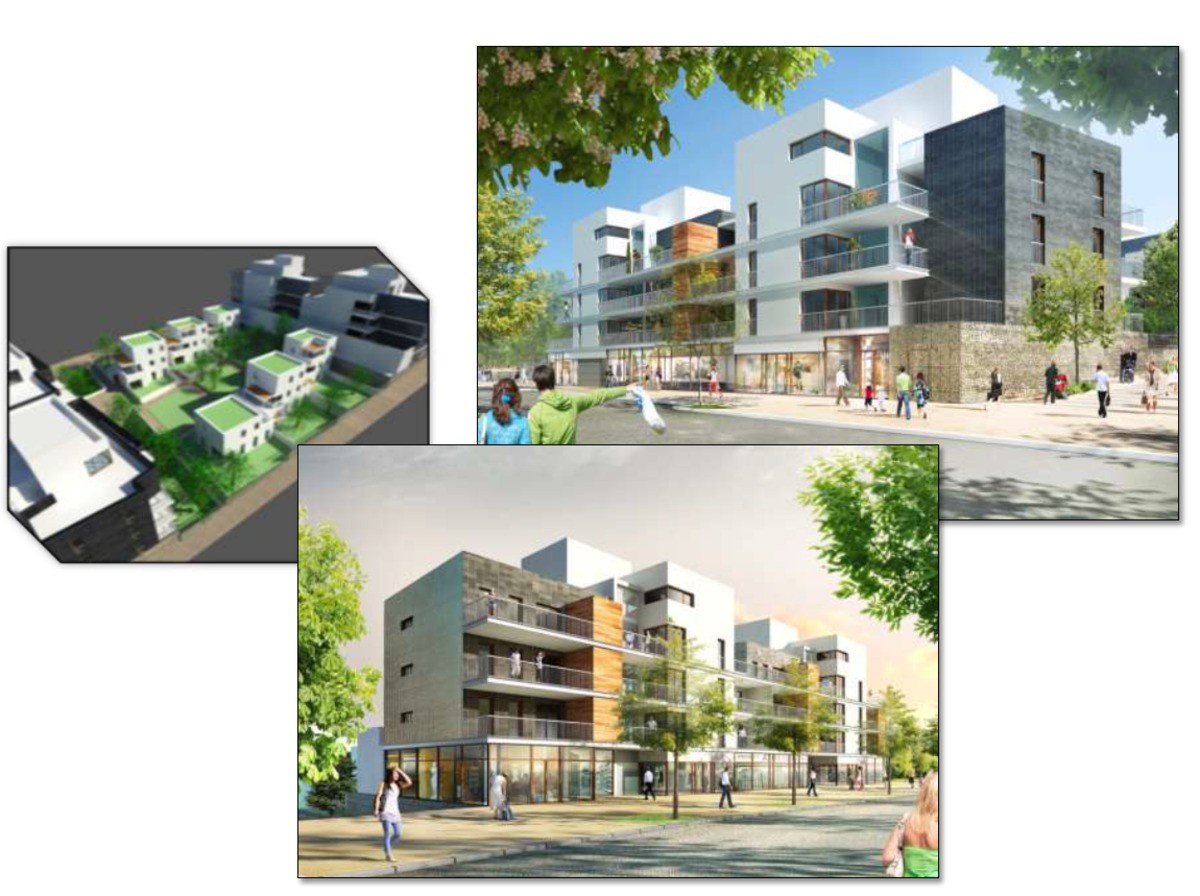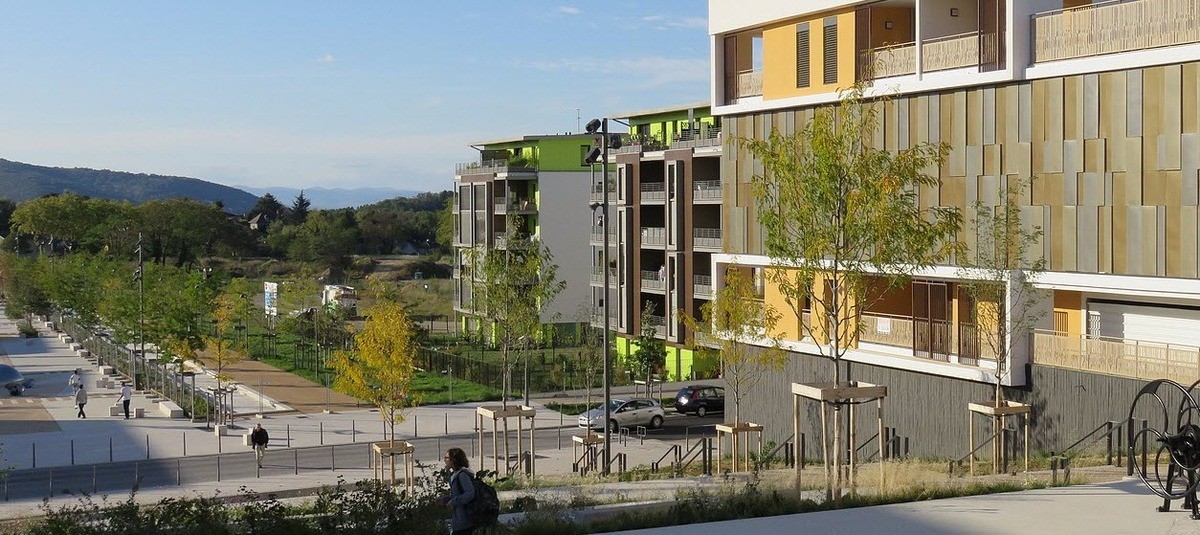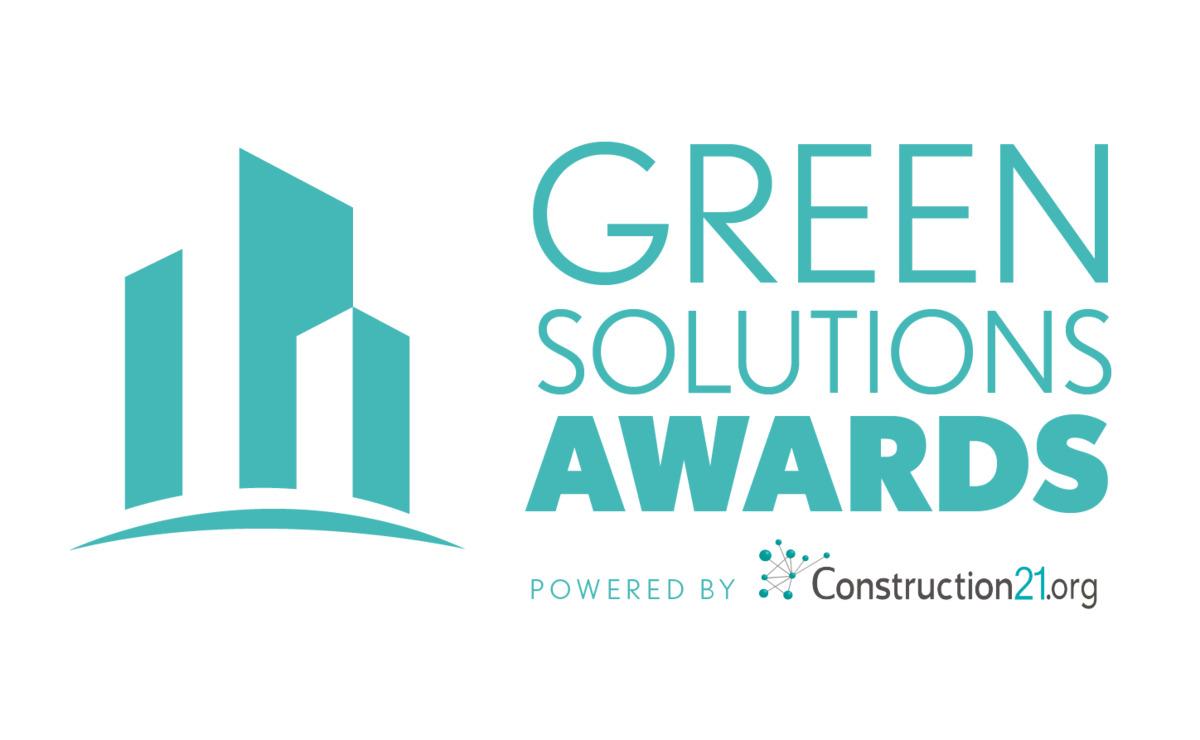ZAC Castellane - Sathonay Camp District
Last modified by the author on 17/03/2021 - 16:13
- Address 1 - street : rue de la République 69580 SATHONAY-CAMP, France
- Population : 4 000 hab
- Starting year of the project : 2006
- Delivery year of the project : 2021
-
32 ha -
27 000 000 €
Eco-neighborhood of 32 ha in the town of Sathonay-Camp, including the construction of a regional center of the National Gendarmerie, a sports center and 750 housing units.
The project started in 2006 and will end at the end of 2021 with the delivery of the last residential blocks.
Programme
- Housing
- Businesses and services
- Public facilities and infrastructure
- Public spaces
- Green spaces
Project progress
- Management phase
- Delivery phase
- Operational phase
Procedure type
- Urban développement permit
Prescriptions and zoning
- Particular conventions
Key points
- Quality of life
- Economic development
- Mobility
- Biodiversity
- Energy /Climate
Approaches used
- Ecodistrict national label
Data reliability
Self-declared
Photo credit
https://earth.google.com
https://www.leprogres.fr/rhone/2015/09/29/zac-castellane-un-urbanisme-recompense-par-un-trophee
Type of territory
Sathonay camp is a town of 2 km² located 7 km north of Lyon.
In 2006 it had 3,250 inhabitants
The Castellan ZAC project plans to increase the town's access capacity to 8,000 inhabitants by 2022.
The town is ideally located on the northern plateau of the metropolis of Lyon.
The TER Lyon-Bourg en Bresse line crosses the town.
Climate zone
[Cbc] Mild, dry winter, warm and wet summer.
Land price
3 665 €/m²
More info
https://serl.fr/references-groupe-serl/zac-castellane/https://www.auvergnerhonealpes-ee.fr/actualites-regionales-et-nationales/actualite/la-zac-castellane-quartier-durable-exemplaire-aux-portes-des-dombes
http://www.territoires.rhonealpes.fr/IMG/pdf/QDRAexper-SathonayCamp.pdf
Number of residential units
750
Number of social housing units
150
Amount of the investment taken in charge by the local authorities
5 000 000 € HT
Project holder
Project management
Project stakeholders
TRIBE
Environmental consultancy agency
sarah Giraud
Quality of life / density
A wide vegetated pedestrian path in the heart of the ZAC.
Compact buildings with a small footprint.
Social diversity
The project provides for 750 apartments, 20% of which are social housing and 15% intermediate housing.
Social inclusion and safety
The project provides for the construction of a regional Gendarmerie pole.
The project is located in the heart of the town and is intended to become an extension of the city center.
Ambient air quality and health
The speed is limited to 30km / h throughout the Zac.
Soft mobility is favored by the construction of new cycle paths and pedestrian paths.
Local development
The project provides for the construction of 22 shops, 1 medical center, 1 micro-crèche.
Circular economy
The project provides for the reuse of the excavated earth from the site.
SOLUTIONS
- Citizen participation
- Proximity services
- Security
- Noise exposure
- Business development
- Soft transportation
- Collaborative transportation
- Soil management
- Waste management
- Management of natural areas
- Renewable energies
Mobility strategy
The project provides for the construction of pedestrian and cycle paths with a connection to the network already in place which leads to Lyon.
The ZAC is ideally located 500m from the SNCF station for access to Lyon in 8mn.
SOLUTIONS
- Citizen participation
- Proximity services
- Security
- Air quality
- Noise exposure
- Business development
- Business parks
- Soft transportation
- Soil management
- Waste management
- Renewable energies
Water management
La Zac is connected to the city's collective sanitation network.
Rainwater is collected by a general external retention basin within the Zac fed by draining valleys.
Soil management
The reconstituted and diversified vegetal fabric to create the optimal conditions to promote the gradual establishment of biodiversity. The revegetation will eventually allow the spontaneous installation of local flora and fauna in the public spaces of the new district.
Waste management
All the programs will have to respect the green building site charter.
Energy sobriety
All ZAC programs are planned to comply with current standards (RT2012) with additional labeling (BBC effinergie).
Energy mix
The project provides for a heating network for the entire Zac supplied 70% by a wood-fired boiler and 30% by gas.
Link to Buildings of the area in Construction21 database




